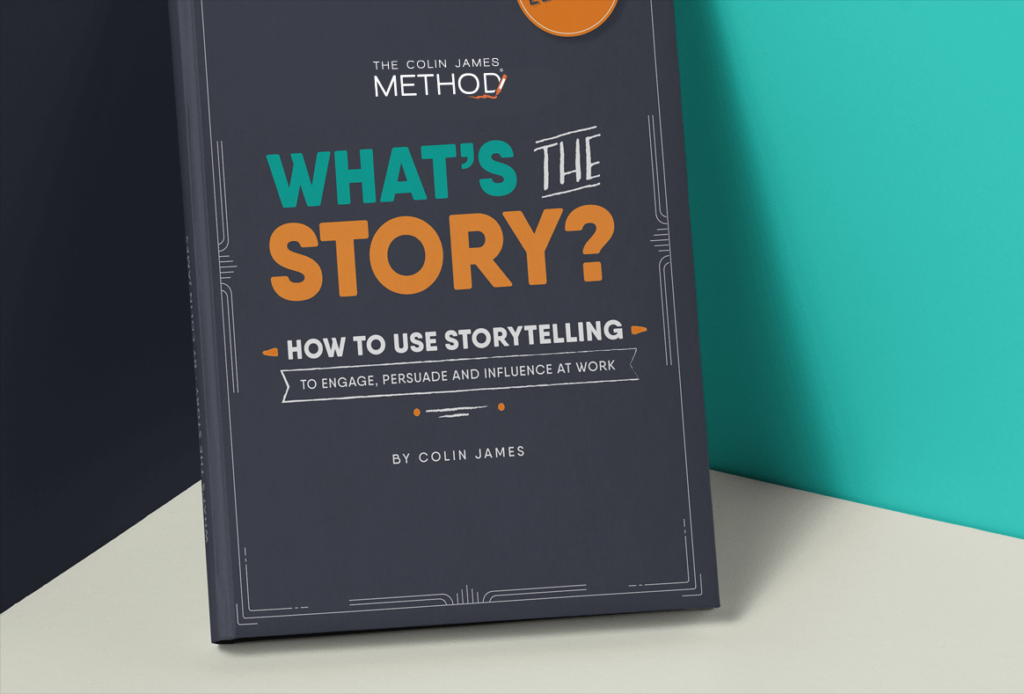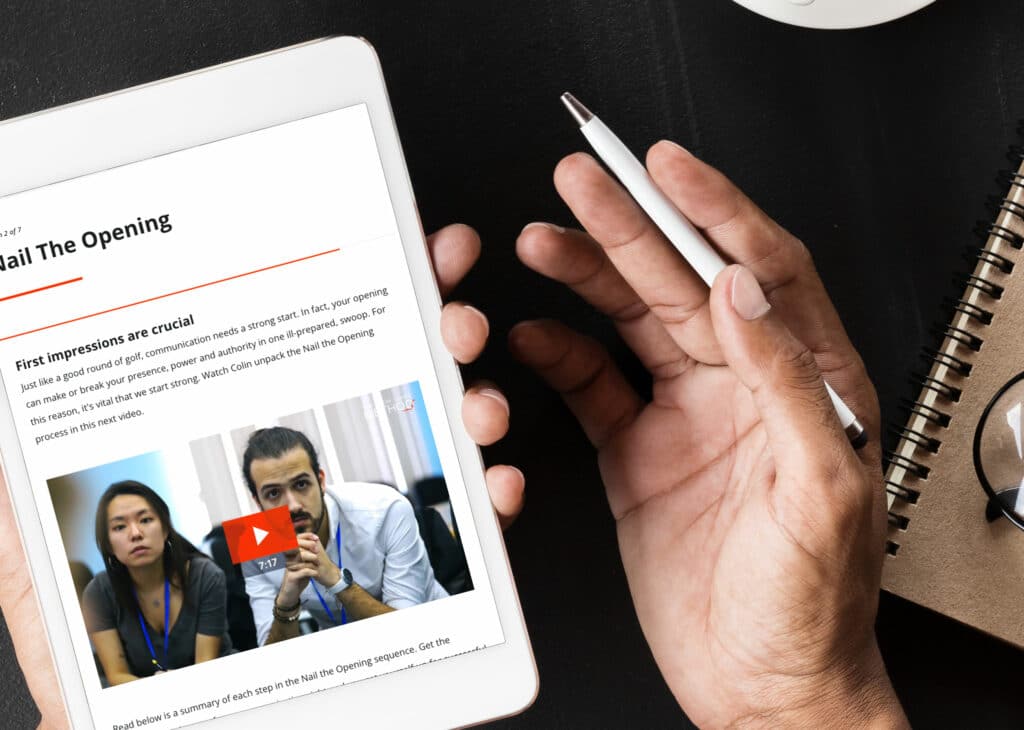In her bestselling book of the same title, Facebook CEO Sheryl Sandberg urges women to ‘lean in’. Yet, women know that it can be very difficult, not to mention intimidating, to lean in when you find yourself in an aggressive atmosphere, where interruptions are the norm. In this blog we explore what is happening for women in meetings and presentations and how they can be heard and be more confident more often.
Let her finish: are women interrupted more?
University of Canberra student Joanna Richards wanted to find out just what women were dealing with. Her PhD thesis, Let Her Finish: Gender Sexism and Deliberative Participation in Australian Senate Hearings, examined ten senate enquiries conducted over a ten-year period to answer the question, ‘how much were women interrupted compared to their male colleagues.’
She found that women:
– were more likely to be negatively interrupted (by other women as well as men)
– don’t speak without interruption as much as men
– were 2.5 times more likely than men to be called ‘emotionally unstable, unreasonable or words to that effect.’
To witness the truth of these findings, we only have to turn on the television. In the last US debate, Trump interjected Clinton 24 times and launched a sustained interruption 11 times, compared to Clinton who interrupted only 8 times and launched a sustained interruption 3 times. It wasn’t just the amount of interruptions that were marked, it was also the nature of them. At one point during the debate, Trump drew censure for muttering, ‘no you’re a puppet’ as well as calling her ‘a nasty woman,’ hardly what one would expect in a debate of this calibre.
And the issue doesn’t just stop at men interrupting women. If a woman is seen to be interrupting, especially in an aggressive way, the censure can be fierce. Journalist and author Jamila Radzi copped so much flak for interrupting Steve Price on an episode of The Panel that it prompted a petition demanding she apologise on change.org garnering over 30,000 supporters. That is interesting, given that Price has been found to regularly interrupt female panellists on talk shows. One memorable encounter with writer Van Badham had them discussing violence against women, Price repeatedly interrupted her before dismissing her as being ‘hysterical’ for her concerns about the media being part of the culture that creates domestic violence.
Why do women shy away from the spotlight?
So, unsurprisingly, many women shy away from the spotlight. According to Q&A producer Amanda Collinge, the idea ‘terrifies’ the women she approaches:
‘I’ve invited countless erudite and eloquent women onto the show who’ve declined, dripping with apologies and self-doubt, quick to suggest other women, but just “Not me, oh God, not me!” Some of them are the very women who call for more female voices in public life. On the other hand, week after week I field relentless calls and emails from men, young and old, bristling with confidence and badgering for a spot.’
Even though your phone might not be ringing off the hook with offers from national panels, chances are there has been an opportunity in your career where you’ve felt called on to speak up. Whether that’s presenting to senior management, pitching an investment or even just putting your hand up in a meeting, you may have been deterred by louder voices dominating the conversation.
Yet, by avoiding these unpleasant situations, what you are doing is jeopardising your career. Joanna Richards started her PhD because she came to the realisation that these women’s entire working lives were tied up in trying to get their point across. If they weren’t allowed to speak, ‘they couldn’t do their jobs properly’.
If you are feeling frustrated and impotent in your role, if you are turning down opportunities because you are scared of the inevitable melee, then it’s time to reassess how you approach meetings. The solution is not to put your head in the sand, it’s to put your hand up (both literally and figuratively) using the power of body language to make sure your voice gets heard.
Think powerful, be powerful: How women can change their physiology
Changing your emotional reality can sometimes be as simple as altering your physiology. Harvard Professor and social psychologist Amy Cuddy asserts in her TEDTalk, Your body language shapes who you are, that ‘power posing’ can transform your hormonal balance. A power pose is where you enlarge your body to appear bigger, more dominant, rather than making yourself smaller.
Power posing for even two minutes before a meeting, according to Cuddy, has a curious effect on your cortisol (stress hormone) and testosterone (dominance hormone) levels. She discovered in a sample study, that participants who did power poses found their testosterone levels increased by 20% and their cortisol levels dropped by 25%.
So, by posing like this before a presentation or meeting for just two minutes, you can change the chemistry of your brain. If you do it often, you’re not ‘faking it till you make it’, you’re actually becoming it.
Posture
To continue the power energy from your pose be aware of your posture. We see too many women collapse their posture as they start to speak.
Rounded shoulders, head tilts and clasped hands may be non-threatening to your audience and seem humble but you’re doing your reputation and confidence a grave disservice. Stand tall, square your shoulders and open out your gestures all the while smiling and holding your audience with a warm inclusive gaze. This of course also applies when you’re speaking from your seat. Don’t let your spine touch the back of your chair, keep height in your posture and hands on the table, not on your lap.
The stop sign
Even if you’re feeling like Wonder Woman after a massage, when you walk into a conference room, you may have to deal with senior stakeholders who like to use any gathering as an excuse to make their voices heard, or a particularly aggressive colleague who wants to pin you down like a butterfly specimen. Luckily, the power of body language works here as well. With a few visual cues, you can diffuse a volatile situation and wrest control back.
If Dave from accounts wants to get his two cents in, to the detriment of your meticulous and excellent presentation, then just keep talking. As you are doing so, raise your hand like a stop sign, keeping eye contact with the rest of the attendees and keep going. It might feel weird, and even counter-intuitive, but it works. To see a master of the ‘stop and talk’ move, watch Penny Wong handle interruptions. She never loses her rhythm, she gets her point across and the interrupter actually stops interrupting.
The Leveller
Or in other words: Simmer Down. If you have a boisterous child who you’d like to be quieter, pressing your palms downward automatically signals to them that it’s time to be calm. Funnily enough, it also works for adults. Pioneer of family therapy, Virginia Satir, used to say that this gesture is particularly effective because it conveys finality and assertiveness. Once again, if you’re not someone who uses this hand gesture a lot, it’s going to feel aggressive at first, but you need to push through that feeling and make sure it’s part of your repertoire because it’s simple and it’s effective.
Power stare
We all know that holding someone’s gaze directly for too long can cause discomfort and it can feel aggressive, but there is a time and a place for it. If someone is overstepping the mark when you are speaking, it’s a good, simple way to convey to them that what they are doing isn’t appropriate. Hold their gaze for a long moment as you’re speaking before moving to look at all attendees. In most instances the interrupter will be jarred into backing down, allowing you to get on with your point.
Back yourself
The above gestures can help you on your way to owning your part in a conversation, or owning the whole room, but if you want to elevate yourself to being a confident, calm speaker you have to work at backing yourself. Anytime you hear your inner critic start to harp on, be proactive in shutting the negativity down by going through these 4 steps:
- Identify it – know when it’s negative self-talk
- Objectify it – realise it’s not you, it’s just a voice
- Manage it – understand where it comes from
- Banish it – replace it with a generative and constructive voice.
However, the only way that you are ever going to feel truly comfortable is to put yourself out there and practice. Becoming a confident communicator won’t happen after one presentation, it’s a process. But if you practice and commit to creating a space for yourself in meetings, it won’t be long before you are holding your own. We know that these tips will have you well on your way to becoming a more powerful and in command presenter. If you’d like to know more about stepping up and presenting with authority, take a look at The Art Of Influence 1-day workshop. The workshop will teach you valuable tools to deal with these challenging situations. So they become a lot less intimidating.
The Colin James Method® Facilitators train corporate executives to improve their professional communication skills with a proven methodology. Our highly trained Facilitators and Coaches are recognised for their experience in their fields and have worked with many individuals and organisations around the world to master the art of communication.











